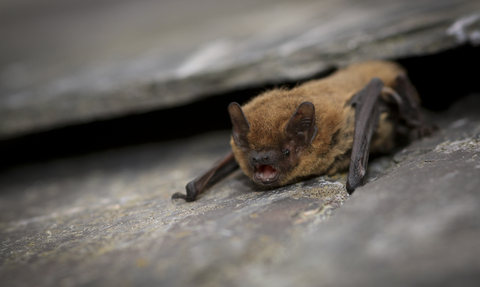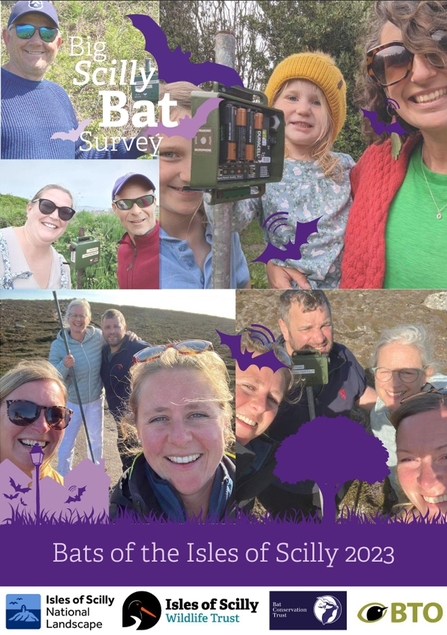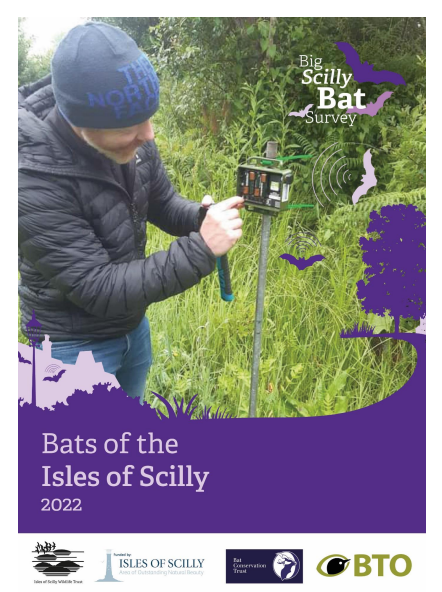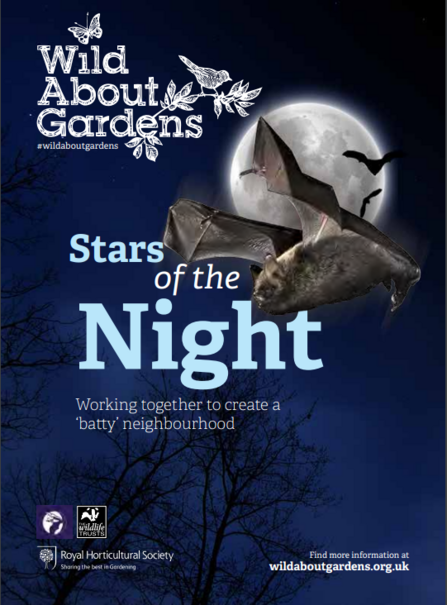
Big Scilly Bat Survey
Bats on Scilly
The Big Scilly Bat Survey is an innovative project led by the Isles of Scilly Wildlife Trust and the Isles of Scilly Bat Group, and funded by the Isles of Scilly National Landscape and supported by Bat Conservation Trust. We are using state of the art technology developed by the British Trust for Ornithology (BTO) to help answer a few questions, including what bat species live on the islands, which species are resident, which are seasonal visitors and the favourite foraging grounds on different islands. We want to help bats thrive on Scilly, so understanding their ecology is the first step.
Read the 2023 Report
Read the 2022 Report
The Big Scilly Bat Survey is running over three years, from spring-autumn 2022-2024. We are delighted to be working with land managers, farmers and businesses across the archipelago. Local volunteers and staff work together to put out the static acoustic monitors (SAM) over six nights. The stationary detectors record data constantly, listening out for pips, squeaks, clicks, chips and chatter, most of which are beyond human hearing. When the sound files are downloaded and analysed, we can build an island-wide picture of the secret world of bats and understand more about their behaviour. Not only that, but early results are allowing us to 'listen in' to other species, too, and we're already picking up the sounds of Scilly shrews and crickets on our detectors.
What's involved?
The Isles of Scilly Bat Group has recruited members from across the islands to take part in our 500m² surveys. Each volunteer installs the SAM within a 500m² square for a total of four days and nights, which records constantly. All five islands are divided into squares, with the idea being to survey each square. The volunteer then downloads the sound files on to their laptop or computer and sends it to the BTO pipeline for analysis, a process that sorts the files into what it thinks the species are. The pipeline dramatically reduces the amount of analysis needed for the project, but the data still needs to be audited by manually analysing some sonograms at the end of the season. Like us, the technology is also learning. For example, the pipeline had never come across a Scilly shrew before and believed them initially to be Noctule bats (which echolocate at 20-45kHz), however with the shrew files now added to the configuration files, there’s less chance of this happening.
At the end of the year, we will analyse all the results with the help of volunteers and Bat Conservation Trust and start to build up a coherent picture of what bats are present on Scilly, and what we can do to help them. The project will run for three years, giving us an invaluable insight into this secret night-time world.
Take part
We're keen to recruit additional volunteers from across the five islands (ideally one on each island) who might be able to help us with the technological side of the data management, downloading and sending the data, it’s really simple if you have a computer. This requires a reasonable knowledge of modern IT technologies (we will provide training) and your own device; it needs to have free space (max. 32GB) on its hard drive to store the recordings temporarily before upload.
If you think you can help, please contact Darren on DarrenHart@ios-wildlifetrust.org.uk.
Bats are fascinating and largely misunderstood creatures. We know that on Scilly, seven species of bat have been recorded, however only three are resident: the common pipistrelle, soprano pipistrelle and brown long-eared bat. This research will play a vital role in understanding more about them and inform our conservation efforts to help them.
There's lots you can do to support bats in your community, like encouraging an abundance of insects, reducing light pollution, adding a pond to your garden or cutting back on pesticides. Download our Stars of the Night Wild About Gardens booklet to find out more.



